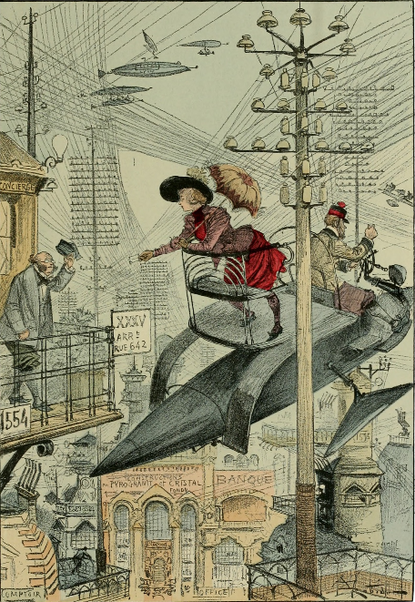Your emotional future. Olafur Eliasson
Interview of Olafur Eliasson to Eckhard Schneider, General Director of the PinchukArtCentre which present the first solo exhibition of Eliasson entitled “Your emotional future”. The show runs from 21 May till 2 Ocotber, 2011. Eckhard Schneider: Your exhibition for PinchukArtCentre covers an impressive amount of ground. Many new works have been created for it, amongst others works that signify a totally new direction for you, for example Obsidian Garden or Ceiling Wave. What role do these new works play within the overall concept of the exhibition?
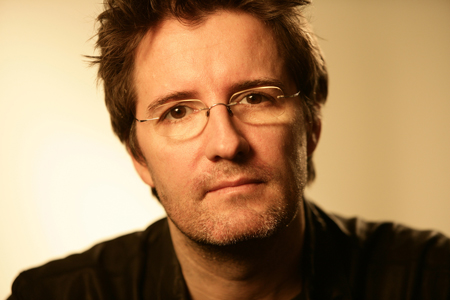
Olafur Eliasson
Olafur Eliasson: In principle my work is a progressive system developing or evolving in a certain direction and from which questions arise, one after the other. It could be considered as a kind of forward motion that is occasionally detached from its environment and isolated or in other cases is directly bound to its surroundings. Sometimes the environment is the work’s main inspiration, and other times the inspiration arises from work in the studio. The direction has a very wide range. However, the time periods, deadlines and junctions that exhibitions represent within such a development, are certainly very important. Suddenly a moment crystallizes in which thoughts must become form, in order to attain autonomy. The thoughts then continue into the world in another language or another form – in the form of the work.
How does this translation or transformation from the thought, or better, the idea to the work occur? There is the greater context of this evolutionary system, and in a larger context the lava floor certainly refers to the obsidian landscape. The lava floor is already ten years old. There have also been other ideas where I have brought natural phenomena into interior spaces, whether water, plants or earth in Bregenz for example. So I’d already dealt with the concept of floors, which enable a fundamentally different perception when you walk across them. I’ve sometimes realised them in a form in which they can actually be stepped on. But nevertheless, just imagining stepping on them already represents a way of walking across them. In this respect I certainly see myself in relation to other artists, who for years have been bringing the natural world into exhibition spaces and making a statement about nature.
An example would be Earth Room by Walter de Maria. Whilst working in the studio there were two points that interested me in particular about obsidian. One was a talk in my school, which revealed what an important role obsidian had played as a mirror within art history. This stone relates very clearly and strongly to the tradition of painting.
I found this interesting because it brought the mirror very strongly into play, and for me the mirror has always been an important element in my work. I’m particularly concerned with the mirror’s, particularly the obsidian mirror’s relationship to vision and the perception of space in general. Secondly I have firsthand experience of obsidian from Iceland and in particular from a trekking path I know well, leading through an area called Hapzilluskerd, which means raven’s forehead. Sker means rock. Raven rock. It’s called that because ravens are black and shiny. Even as a very young boy I often walked this route. What is exciting about it, is that in this rather expansive landscape there is nothing but this volcanic glass.
Obsidian is formed from a particular kind of lava; for example when a volcano is located under a glacier, or if lava is suddenly cooled and no air is present. In September last year I went trekking with students from my school across this obsidian field, and it was on this occasion that it occurred to me again how fantastic it is. This is when I started to think about whether it would be possible to create an obsidian garden. You are not allowed to export obsidian from Iceland – it’s protected because it’s so rare – but not as rare across the rest of the world as I’d initially thought. That was the point at which I began to think about the interior and exterior and whether I could incorporate it into an exhibition.
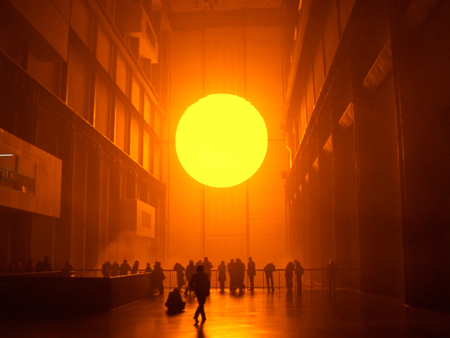
Olafur Eliasson. The weather project
ES: Is it exclusively the materiality that interests you, the natural processes which are stored within it, or is it also the blackness, that is the colour, its swallowing of light? The reflecting and swallowing of light?
OE: I’m interested in its function as an agent or producer of mood, a producer of atmosphere, because the black is uncannily dramatic and the shards are very menacing. I was fascinated by the art historical aspect, whilst also dealing with my own past via the stones. That unfortunately is rather kitsch but what you see in a mirror is often a question of composition. You hold it in a way that the image in the mirror makes sense, or is of relevance. You want to see the car behind you, so the mirror is positioned to specifically enable this.
The reflection you see in the mirror is in principal the past, that which has been left behind, but in the Obsidian Garden you can also see a path before you; the future however is unforeseeable in a very dramatic way. On the one hand no predetermined path exists leading there, and on the other hand the reflection you can see is the light from where we have come.
ES: But isn’t there also a certain emotional element? You have tried to keep it as neutral as possible because an emotional element is also evident in the title. The exhibition is called “Emotional Evidence”.
OE: Oh yes, the title. In general emotion runs through our fingers and we perceive it as something rather intangible. The same can be said about the world at large which for the most part is comprised of the rational and the controllable. What remains is a fluid substance from which feelings originate. The idea of talking about emotional evidence is a kind of attempt to take part of this fluidity and via an act of faith transfer it to the rational, thereby allowing rational thinking to also be emotional.
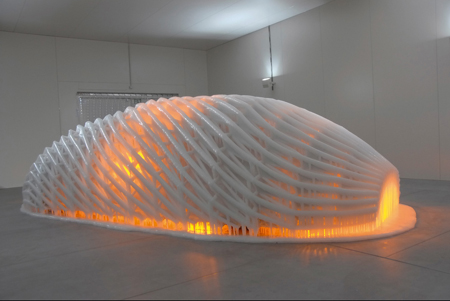
Olafur Eliasson. Side Angle Lights
ES: In other words, a kind of exchange.
OE: Yes, or it’s about realising that if in future we want to get on with each other even better, it won’t be enough to rely on systems, dogmas, manifestos and political ideologies. We also have to rely on other things such as sympathy, sensitivity, empathy, and the fundamental idea of human interaction, which are all superimposed with emotion. Emotional trust does not mean that it can’t necessarily be formulated in words. For example when I get into a taxi at Kiev airport to get to the museum, even though I’ve never met the taxi driver before, I can trust that he will not kill me whilst driving. I can assume that he does not want to die either, and that means that I can basically trust him to get both of us to the museum alive.
Without wanting to be didactic, emotional evidence for me means that in principle human interaction exists, and I would also insist that this is fundamentally good. Good in the sense that we would in principle rather be with others than be alone. If an exhibition is really the appropriate medium for providing evidence remains to be discussed. But as a statement I find it rather interesting because ultimately art has a lot to do with trust.
ES: Perhaps it is also true with respect to the way you’ve constructed the exhibition, in the balance between very ephemeral works that exist for only a moment, and others such as for example Obsidian Garden and also Ceiling Wave, which are very object-like and enduring. Is the communication between the various floors, the fluid and rational, the empathy with and relationship to reality contained within the construction of the exhibition?
OE: Yes, there is a strong relationship between the works, and part of the work has definitely come about with regard to the exhibition or has even been conceived especially for the exhibition. This entails an awareness on my part of the exhibition location and the city, its atmosphere and my relationship with Ukraine. A network is created between everything I know about the situation, about you, Victor and his wife and really everything I’m carrying within me, influencing of course the decisions I make at any particular moment.
With regard to Ceiling Wave perhaps it’s important to say that it was particularly the floor of the exhibition space that interested me, a very distinctive tiled stone floor, which expresses a particular cultural idea of what a prestigious space should look like. Incorporating this floor and creating an installation of something fluid above it not only results in the space dissolving in the reflection, but additionally people’s movements can be largely activated by the mirror. So suddenly it’s not only a staging of the space, or the body – if you were to stand still much less would be happening – but the movement beneath the ceiling activates the waves in a way. Walking through the space, Ceiling Wave is set in motion by the reflection, so that the responsibility for generating movement has become the viewer’s. The ocean’s waves would not move without the viewer, and I find this extremely interesting as conveyor of ideas. So then, unexpectedly, the floor beneath you, this black floor, and the right to experience the wave floor has been shifted to the viewer.
I think ultimately this also occurs with the crystallization of the Obsidian Garden. In principle it appears to be ultra-stationary but somehow it is reminiscent of a black sea frozen in the middle of a storm, and in your imagination you can envisage being a small boat braving the elements. Pathetic maybe, but in principle I have complete trust in the viewer and assume that they will have no difficulty imagining something like this. The drama contained in such an image is not that alien to us. I’m mixing something very spectacular together with something very intimate, and I find the fact that it is physically straightforward but nevertheless still remains intangible as an idea fascinating. The colour is set in motion, materiality, the physical and real involvement takes place over a period of time. The time factor is important, the fact that it lasts, that you also require time to develop understanding. When you visit an exhibition and look at a piece of work, the delayed perception and the extended interaction both play a role as well as the fact that when entering and exiting you meet other people. You are aware of participating in an experience with others.
You are aware of the other people that are there, just the same as you. You share your experience with others who have also chosen to make the same excursion as you, and naturally an idea of togetherness occurs: you were all in the very same exhibition. You might not know each other personally, but in contrast to the people that you meet later on in the day, you have this in common. The other people were not in the exhibition, at least not on that very day. Hopefully however everybody in Kiev will go to the exhibition at some point. In general my interest is directed towards how the social, interpersonal or inter-suggestive structures in such an exhibition are constructed.
This is also of particular relevance to the next floor, because this is where the fog work is. In the fog work initially you encounter only yourself, you are dealing primarily with yourself. Vision – or at least that’s your first thought – is useless, and so a fundamental re-evaluation occurs. You ask yourself, what am I supposed to be doing in this situation? How do I orientate myself? Very quickly, you obtain enough self-confidence to move forward, and subsequently keeping your distance from other people becomes the main issue. You don’t necessarily see other people before they are close enough that in any other situation they would be impinging on an individual’s private sphere. Suddenly you are in a confined space, in close proximity to someone you don’t know – the distance is perhaps less than a metre, whilst under normal circumstances at a distance of two metres you would have started to manoeuvre away.
The collective image is being negotiated in different spaces in differing ways. Some works require a specific position or movement from the spectator. When viewing you are also placing yourself on exhibition. Watching the viewers can also be interesting, as the people being observed are normally conscious of the fact that they are being watched.
ES: By other people or by the work?
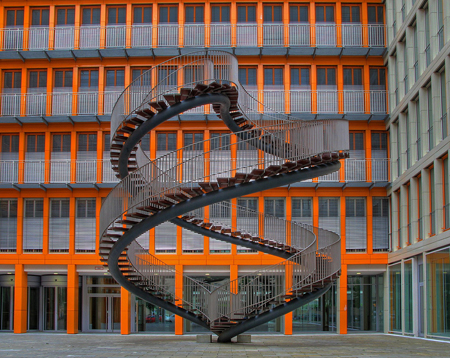
Olafur Eliasson. Umschreibung (Rewriting)
OE: In philosophical terms certainly also by the work, but I meant by other exhibition visitors. It can certainly be said however, that the work reciprocates the gaze of the viewer.
ES: Yes, definitely.
OE: I have often referred to this, and this is where the will of the object comes into play. Objects are not merely a passive presence in a space, they possess an intentionality which is encompassing and that also interacts with reality. The world is not the framework for the work, I would say it is an event produced by the work. You could perceive the work as a reality producer, in the sense of Ophül’s “reality machine”, and so the world is a natural cycle of mistakes of interobjectivity, the objects interact even without the phenomenological concept. Early on in phenomenology I came across the idea that the subject accounts for everything, that is, people are perceived exclusively as subjective beings.
ES: Olafur, returning once again to two different works in the exhibition, on the one hand there’s Obsidian Garden with its stones which in their concrete manifestation as objects function virtually as eyes, whilst on the other the fog room concerns movement within conditions of uncertainty, an experience of fundamental phenomena. When considering these two works together, it strikes me how diametrically different they are. This leads to my next question. We did an exhibition together nearly ten years ago in Bregenz. When you consider the exhibition in hindsight – you used the expression “evolution” – how has the evolution of your work progressed since then?
OE: Yes, that’s a good question. Hopefully it has developed or changed somewhat. What interests me is how the situation on site will further develop over time. When people talk about Kiev, it often sounds very confident in terms of the future. The current situation is discussed much less. That’s often the case when people speak about a society in which culture is being newly established. I think people follow this with great understanding, and of course they really have a great deal of respect for the fact that Victor and his wife are dedicating themselves to such a project. I was recently talking to Suzanne de Pagé, and she thought this was of invaluable importance. It is incredibly important to develop a sensibility for the future. You could of course argue that the building that houses the institution at the moment, is not ideal.
ES: On the contrary.
OE: Nevertheless the building represents a framework from which something could grow in an evolutionary manner. There is currently a moment of reflection, which allows you to reconsider your own values regarding the forthcoming step. In many places where culture does not have much of a foothold it often has a weak identity, which means it is not equipped with the necessary resources and determination to assert itself against the prevailing economic or political powers. You often encounter a museum that’s been built in a place where, with regard to the power structures, the cultural resources have not been seized accordingly, and then a kind of “palace of power” occurs, in which culture is then allocated a place somewhere within it, but…
ES: … is condemned to leading a shadow existence.
OE: Yes, it’s transformed into a shrine. The strongest resources, real power would of course create something that would truly allow art to flourish. All over the world the question of the chicken or the egg is being discussed, which of the two preempts the existence of the other, but in general I think it’s good to go through a test phase in which sufficient sensitivity can be gained and then slowly approach the complexity of exhibiting. This complexity increases, in particular when younger artists are being exhibited. A dead artist, and I’m aware that this is unfair, has no complexity, whilst a very young artist has a lot of complexity.
ES (laughs)
OE: Okay that’s not exactly correct, but it’s true in principle.
ES: Let’s take it as such.
OE: Basically, the PinchukArtCentre has an interest in contemporary art…
ES: Yes, and in the living (laughs).
OE: …and contemporary ideas are getting more and more complex…
ES: Yes.
OE: …and that means, things like raising your awareness over a certain time period and test phases and a practical trying out are incredibly important.
ES: I think you have made a very important point. The institution, its whole range of experience, the programmatic direction, the existing infrastructure, etc. I think is just one side of the story. What I consider to be even more essential – and this is also something that strongly interests you – is the role of the viewer, that a young audience is growing up together with us.
OE: Yes, absolutely.
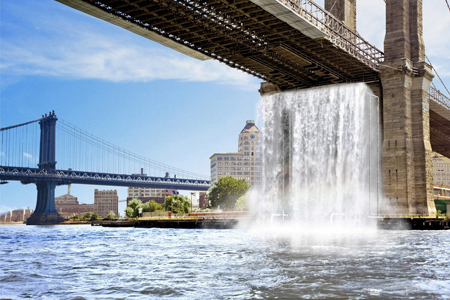

Olafur Eliasson. The New York City Waterfalls
ES: I’ve already told you that we face a really wonderful challenge in that sixty percent of our visitors are between sixteen and thirty years old.
OE: Fantastic!
ES: Yes that’s formidable. Young people come to the museum, and recently we’ve even noticed that they don’t walk through quite as quickly any more. It still happens, they have a particular pace about them, but what is decisive is that they return.
OE: Yes, with regard to this generation there are also other new developments happening at the moment. Music for example used to be listened to on the radio, later on CD, but nowadays music can be downloaded from the Internet in just the same quality as could be heard on the radio or in the CD shop. There is no loss, and the vast industry, the sales system or financial machinery behind it is breaking down.
ES: There are so many new works, those from 2010 and many that you have conceived especially for this exhibition, which is wonderful. Amongst these there is also the work Beauty from 1993??, which represents something of a cornerstone for the older works. What I find interesting here is that beauty is being addressed, and from my point of view I don’t think the aspect of beauty in your work is considered enough. Would this be wrong of me?
OE: (laughs) No, you are not wrong; you could say that. I should probably deal with this more myself. On this point I would say I’m simply a bit ahead of my time. This will come; it’s not my fault that ugliness is addressed more than beauty. It’s not necessarily bad to address the ugly, but sometimes it is difficult to talk about a certain idea without simultaneously excluding others, that’s always my worry. Obviously in many of my works appeal is a very important component, especially in engaging people with the work. My work is often initially perceived as an image, because a strong element of recognition exists. Whether it is spectacular or unspectacular, there is no doubt about what it is you are dealing with, the image is recognizable. You can see that this is ice, you notice that this is water, you even recognise which material is addressing you, and so on.
I’m very interested in this general accessibility. This creating of a general openness, a kind of democratic right for the spectator is very exciting. People often find beauty compelling, and I also think beauty has the ability to convey or support a dialogue or dispute. Within this issue the idea of something beautiful or happy or sympathetic is very important. Things which lay beyond our normal perception are often linked to the supernatural, for example the spiritual, which I find very interesting. That we have faith in our intuitive feelings.
Our rationality is often led by our worries, our fears. We tend to be ultra-rational because we are afraid of making a mistake. Beauty is such a difficult word, but in principle you could consider it to be a counter balance to fear. Not only in the sense of balancing weights on a scale, but also as matter, as material. For example this is a wonderful image of a close-up of a drop of water, which then moves about in the exhibition. Here I was thinking about the invitation card.
ES: Yes.
OE: That’s a really fantastic image.
ES: Yes, wonderful.
OE: And what you are seeing there is in a sense invisible to the eye, even if the idea is always present, you could say it lies beyond our horizon, and via the exhibition it can enter our field of vision. In the exhibition you are then dealing with things emerging from beyond the horizon and into view; or your horizon is being extended. You experience a situation in which you can trust yourself to engage with your own spirituality, even if momentarily so. I’ve repeatedly spoken about the circumstances which make a good exhibition or a good museum. A good museum succeeds in holding a mirror up to people and showing them who they really are.
ES: Could I just briefly return to beauty? Is there in your work – if I now think again about Beauty – also something like rapture, that the work produces a form of rapture? Rapture means that someone is removed from themselves, which of course is a very romantic concept.
OE: Yes, often that’s definitely the case. Sometimes it is necessary to obtain some distance from yourself for a period of time. This situation is difficult to generalize, especially since different people probably perceive my work differently. Frequently expectations are so pre-determined that even though I say A, people experience B. Or I say “red”, and people see “blue”. Sometimes rapture is established in conjunction with an element of deconstruction, leading people to become aware of it and consequently to also critically deal with it.
However, rapture can also be very seductive in the romantic sense, making it difficult for people to become aware of it. Hopefully my work also invites a critical engagement with it at a later point in time. In general I consider rapture to be highly dangerous, because naturally the whole marketing machine relies on this, functioning like a placebo and alienating people from reality.
ES: But you repeatedly create moments in the exhibition in which rapture is negated. Camera Obscura for example liberates the gaze for the external, for Kiev outside…
OE: Yes.
ES: …even if in the form of another reflection.
OE: Yes, that’s right.
ES: Perhaps this is a form of generally modulating a work, that things occur simultaneously, that they do not expressly possess one aspect but the gaze is permitted a view of multiple aspects.
OE: Yes, and within every state of rapture the person themselves is present. You can only be in rapture over your own shards, even when dealing intensely with abstract qualities. You realise that you are submitting to a highly spiritual and powerful experience. As Victor Pinchuk said about art: “I actually make pipes, and that is why the thickness of the shell of this egg interests me so much.” It is fascinating to see this rapture turn into something so concrete. A piece of work is successful to him, because it has managed both. This is again very intriguing.

Eckhard Schneider



